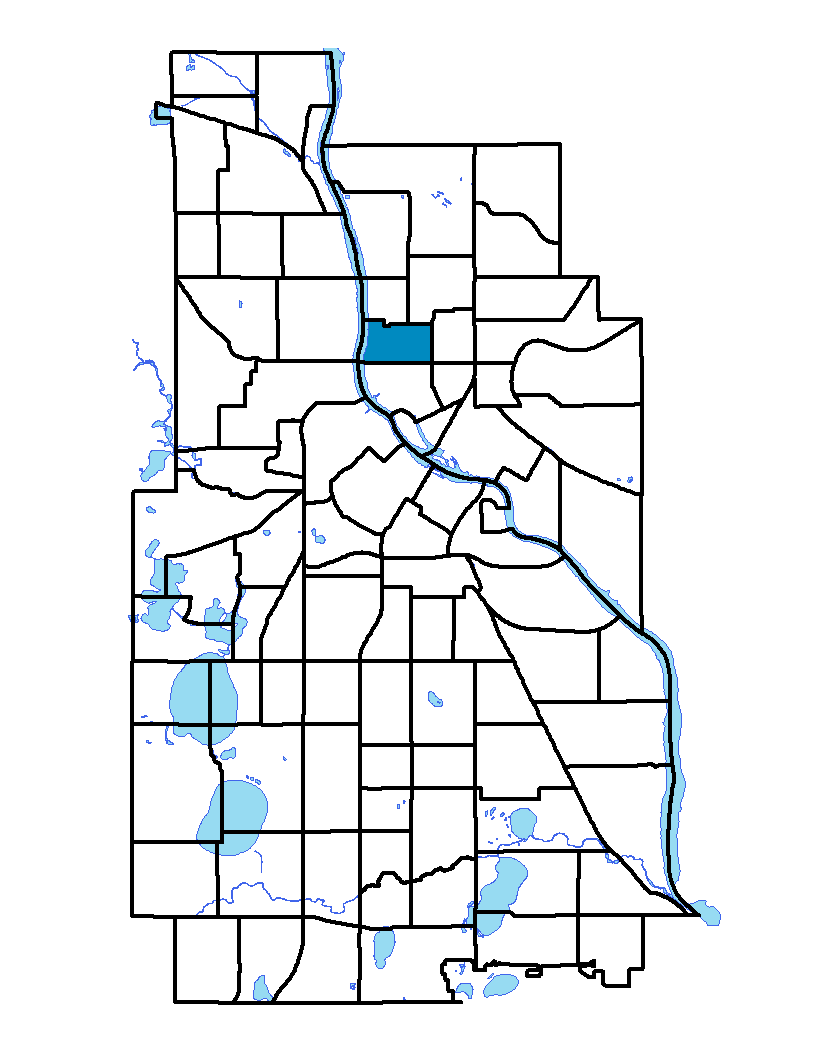The Sheridan neighborhood is located in northeast Minneapolis. It extends from Washington Street NE on the east to the Mississippi River on the west, and from Broadway Street NE on the south to 18th and 17th avenues NE on the north. It is named for Civil War General Philip Sheridan. The neighborhood elementary and junior high schools and the local park are all named after General Sheridan too. A large portion of the neighborhood was built for industrial use of the Mississippi River, but there is potential for new housing in these industrial areas. The Sheridan neighborhood also has a sizable amount of small apartment buildings.
To learn more about the neighborhood association visit: www.sheridanneighborhood.org
Indicator Details
| Indicators | Primary Domain | Indicator Value |
Rank |
Tier |
|---|---|---|---|---|
| High School Graduation Rate | Educational Opportunities | -% | - | Data N/A |
| School Readiness Scores | Educational Opportunities | -% | - | Data N/A |
| Residential Proximity to Traffic | Environmental Hazards | 0.0% | 1 | Top |
| School Proximity to Traffic | Environmental Hazards | 0.0% | 1 | Top |
| Business Retention | Economic Health | 7.0% | 4 | Top |
| Offsite Alcohol Outlets | Neighborhood Characteristics | 1 | 6 | Top |
| Food Desert | Neighborhood Characteristics | 50.0% | 11 | Top |
| Preschool Enrollment | Educational Opportunities | 76.9% | 14 | Top |
| Household Transportation Costs | Transportation | 15.6% | 27 | Top |
| Reading Proficiency | Educational Opportunities | 13.2% | 29 | Top |
| Violent Crime | Health Systems and Public Safety | 38.8 | 31 | Middle |
| Pedestrian Connectivity | Transportation | 145.8 | 31 | Middle |
| Blood Lead Levels in Children | Housing | 3.5% | 34 | Middle |
| Age of Housing | Housing | 82.9% | 35 | Middle |
| Employment Rate | Employment Opportunities | 70.0% | 35 | Middle |
| Walkability | Neighborhood Characteristics | 66 | 36 | Middle |
| Voter Participation | Social Cohesion | 28.3% | 37 | Middle |
| Chronic School Absence | Health Systems and Public Safety | 64.4% | 37 | Middle |
| Excessive Housing Cost Burden | Housing | 27.9% | 41 | Middle |
| Residential Mobility | Social Cohesion | 79.2% | 42 | Middle |
| Travel Time to Work | Employment Opportunities | 22.1 minutes | 42 | Middle |
| Proximity to Superfund Sites | Environmental Hazards | 27.8% | 46 | Middle |
| Commute Mode Share | Transportation | 27.8% | 47 | Middle |
| Vacancy Rates | Housing | 7.9% | 49 | Middle |
| Public Assisted Households | Employment Opportunities | 22.9% | 49 | Middle |
| Motor Vehicle Collisions | Health Systems and Public Safety | 9.1 | 55 | Middle |
| Preventable Hospitalizations | Health Systems and Public Safety | 3.6 | 57 | Middle |
| Access to Mainstream Financial Services | Economic Health | 30.6% | 58 | Middle |
| Adult Educational Attainment | Educational Opportunities | 84.2% | 60 | Bottom |
| Proximity to Brownfield Sites | Environmental Hazards | 20.4% | 71 | Bottom |
| Long-Term Unemployment | Employment Opportunities | 8.8% | 73 | Bottom |
| Low Birth Weight | Health Systems and Public Safety | 12.6% | 74 | Bottom |
| Toxic Releases from Facilities | Environmental Hazards | 88.9% | 76 | Bottom |
| Tree Cover | Natural Areas | 25.2% | 78 | Bottom |
| Local Business Vitality | Economic Health | 43.6% | 78 | Bottom |
| Access to Parks and Open Space | Natural Areas | 0.7% | 81 | Bottom |
| Transit Accessibility | Transportation | 104.3 | 87 | Bottom |

